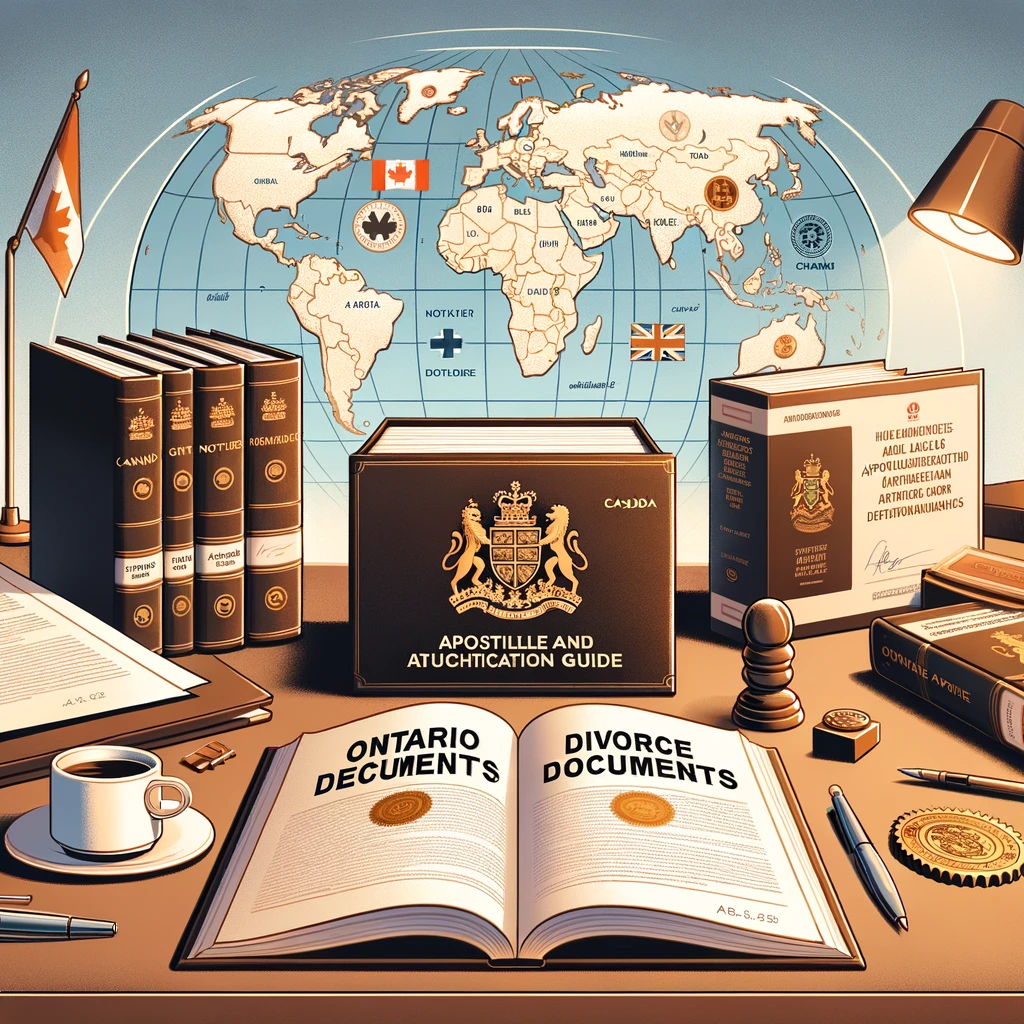How To Have An Ontario Divorce Certificate Recognized Internationally
Guide to Managing Your Ontario Divorce Documents for International Use With the Apostille or Authentication & Legalization process
Table of Contents
- Introduction
- Acquiring Ontario Divorce Documents
- Divorce Order
- Divorce Certificate
- Overview of the Divorce Act
- Understanding the Apostille Process in Canada
- Apostille for Member Countries
- Authentication and Legalization for Non-Member Countries
- Step-by-Step Procedure for Apostilling Ontario Divorce Documents
- Conclusion: Trust the Expertise of Global Document Solutions
Introduction
This guide provides an in-depth look at obtaining and preparing Ontario divorce documents for international recognition, focusing on the newly adopted Apostille process, effective as of January 11, 2024, in Canada. We will detail how to secure a Divorce Order, Divorce Certificate, and understand the Divorce Act. Moreover, we'll navigate you through the Apostille procedure for member countries of the Hague Apostille Convention, and the authentication and legalization process for non-member countries. Our aim is to simplify these processes with a clear, step-by-step guide.
Acquiring Ontario Divorce Documents
Divorce Order: To request a Divorce Order, locate the court of issuance, contact their office, pay the necessary fee, and provide relevant details like your case number and divorce date.
Divorce Certificate: An official proof of your divorce, this certificate can be obtained by filling out Form 36B from the Ontario Court Services website, and submitting it with the required fee.
Divorce Act: Accessible on the Department of Justice website, this federal law governs the divorce proceedings in Canada.
Understanding the Apostille Process in Canada
With Canada's recent entry into the Hague Apostille Convention, the process for using Ontario divorce documents abroad has been streamlined. For member countries, only an Apostille is required. However, for non-member countries, the traditional route of authentication and legalization is still necessary.
Authentication: This step verifies the signature and seal on the document. Contact a Canadian Notary Public to notarize the document, then submit it to Global Affairs Canada for authentication.
Legalization: The next step is obtaining approval from the foreign country's diplomatic mission. Confirm their requirements and submit your authenticated documents along with necessary paperwork and fees.
Step-by-Step Procedure for Apostilling Ontario Divorce Documents
- Obtain Divorce Order and Divorce Certificate.
- Have these documents notarized if required.
- Apostille or Authenticate the notarized documents through Global Affairs Canada or ODS
- For member countries, obtain an Apostille. For non-member countries, proceed to the respective diplomatic mission for legalization.
Conclusion: Trust the Expertise of Global Document Solutions
Navigating the complexities of preparing Ontario divorce documents for international use can be daunting. This guide aims to streamline the process, ensuring that you can effectively manage your documents for use in both Hague Apostille Convention member countries and non-member countries. For detailed and personalized assistance, rely on the expertise of Global Document Solutions.


